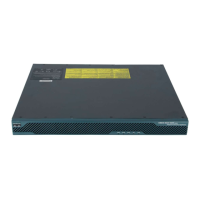Implementing IPSec Network Security on Cisco IOS XR Software
Information About Implementing IPSec Networks
SC-94
Cisco IOS XR System Security Configuration Guide
Information About Implementing IPSec Networks
To implement IP network security, you should understand the following concepts:
• Crypto Profiles, page SC-94
• Dynamic Crypto Profiles, page SC-95
• Crypto Access Lists, page SC-95
• Transform Sets, page SC-96
• Global Lifetimes for IPSec Security Associations, page SC-96
• Checkpointing, page SC-98
• DF Bit Override Functionality with IPSec Tunnels, page SC-98
• IPSec Antireplay Window, page SC-98
• IPSec NAT Transparency, page SC-99
• IPSec Security Association Idle Timers, page SC-99
• Prefragmentation for Cisco IPSec VPN SPAs, page SC-99
• Reverse-Route Injection, page SC-100
• IPSec—SNMP Support, page SC-101
Note For information about IPSec Quality of Service (QoS), refer to the Cisco IOS XR Quality of Service
Configuration Guide.
Crypto Profiles
Crypto profile entries created for IPSec combine the various parts used to set up IPSec security
associations (SAs), including the following:
• Traffic that should be protected by IPSec (per a crypto access list)
• Granularity of the flow to be protected by a set of SAs
• IPSec security that should be applied to this traffic (selecting from a list of one or more transform
sets)
• Other parameters that might be necessary to define an IPSec SA
Crypto profiles are applied to IPSec interfaces (for example, tunnel-ipsec, service-ipsec, and service) or
crypto transport.
If the access control lists (ACLs) specified within the profile match any outbound IP traffic, the IP traffic
is protected by IPSec. The SA is established with the remote peer by IKE.
When using service-gre interfaces, the profile, which is attached to the interface, is not configured with
an explicit ACL. Instead, all traffic, which is destined to the GRE tunnel, is protected by IPSec.
The policy described in the crypto profile entries is used during the negotiation of SAs. If the local router
initiates the negotiation, it uses the policy specified in the static crypto profile entries to create the offer
to be sent to the specified IPSec peer. If the IPSec peer initiates the negotiation, the local router checks
the policy associated with the interface or profile associated with the identity specified in the ISAKMP
profile, which is being used to decide whether to accept or reject the peer's request (offer).

